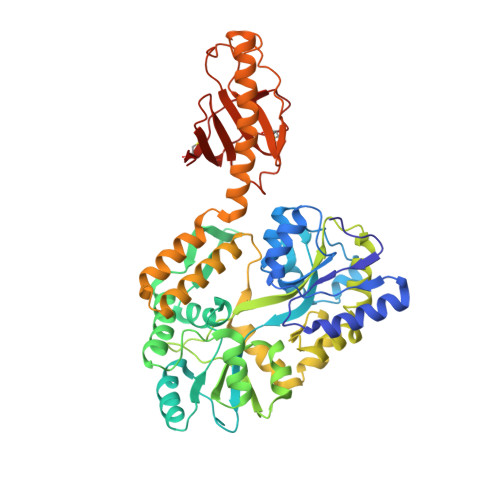A Comparative Structure/Function Analysis of Two Type IV Pilin DNA Receptors Defines a Novel Mode of DNA Binding.
Berry, J.L., Xu, Y., Ward, P.N., Lea, S.M., Matthews, S.J., Pelicic, V.(2016) Structure 24: 926-934
- PubMed: 27161979
- DOI: https://doi.org/10.1016/j.str.2016.04.001
- Primary Citation of Related Structures:
2NBA, 5HZ7 - PubMed Abstract:
DNA transformation is a widespread process allowing bacteria to capture free DNA by using filamentous nano-machines composed of type IV pilins. These proteins can act as DNA receptors as demonstrated by the finding that Neisseria meningitidis ComP minor pilin has intrinsic DNA-binding ability. ComP binds DNA better when it contains the DNA-uptake sequence (DUS) motif abundant in this species genome, playing a role in its trademark ability to selectively take up its own DNA. Here, we report high-resolution structures for meningococcal ComP and Neisseria subflava ComPsub, which recognize different DUS motifs. We show that they are structurally identical type IV pilins that pack readily into filament models and display a unique DD region delimited by two disulfide bonds. Functional analysis of ComPsub defines a new mode of DNA binding involving the DD region, adapted for exported DNA receptors.
Organizational Affiliation:
MRC Centre for Molecular Bacteriology and Infection, Imperial College London, London SW7 2AZ, UK.



















